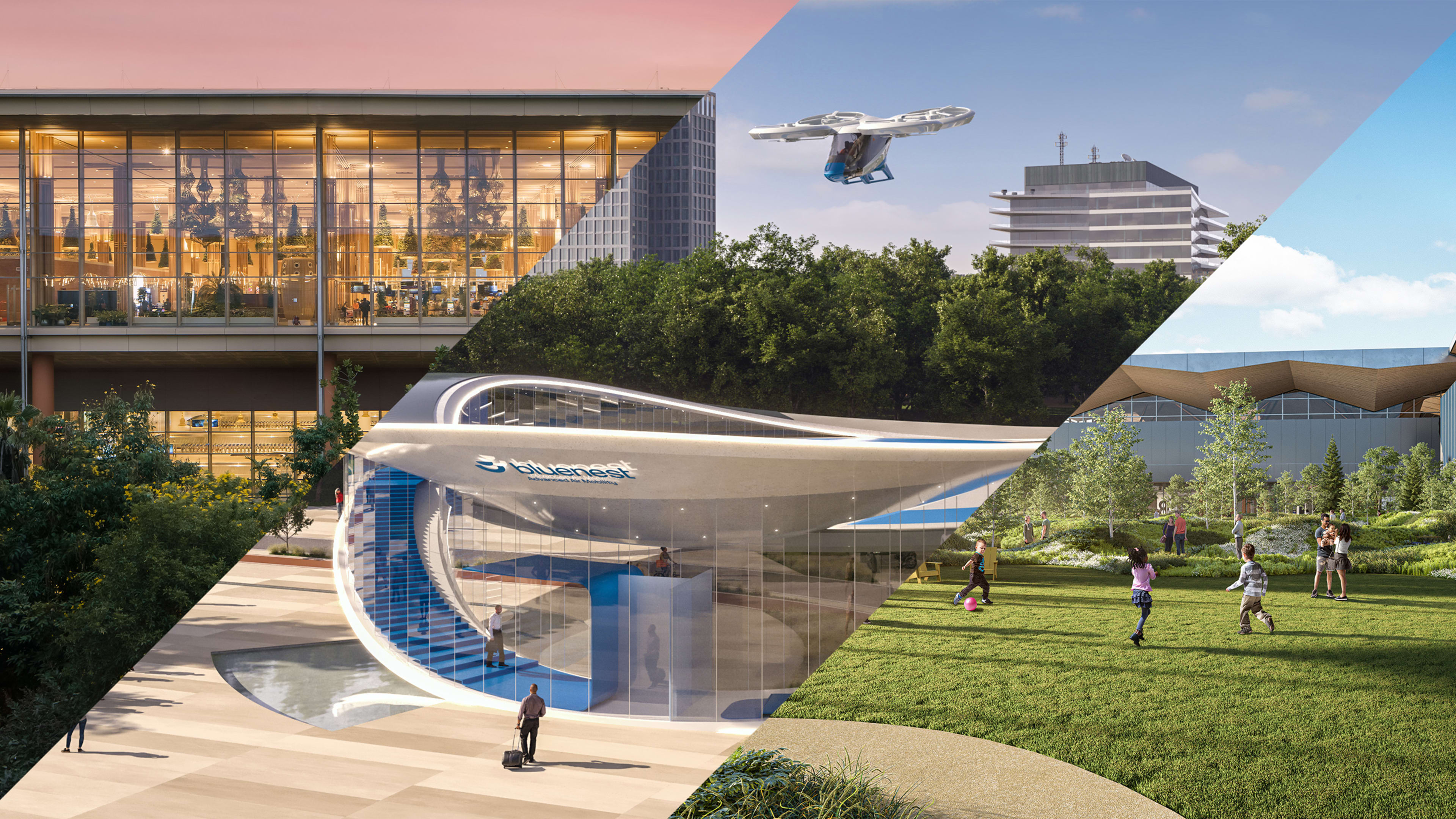In 1962, Idlewild Airport (later renamed John F. Kennedy International Airport) opened its centerpiece building: architect Eero Saarinen’s TWA Flight Center. The sexy, curving structure, meant to capture the movement, transition, and soaring spirit of flight, was topped by four thin concrete shells supported at their corners by Y-shaped piers and connected by slender skylights. It resembled a large bird spreading its wings.
Inside, curved, concrete-clad spaces flowed into each other and then toward jetports via long concrete tubes. It quickly became a beloved icon of the Jet Age. But Boeing’s release of the wide-body 747 jet just eight years later—necessitating much larger berths and concourses—quickly made the terminal all but obsolete. By 2001 it sat as an empty shell (New York Times architecture critic Herbert Muschamp called it “a bird that has lost its flock”), which it remained until it was incorporated into the TWA Hotel in 2019.
The TWA Flight Center is a cautionary tale about how difficult it can be to design for airports. Inherently cutting-edge structures that take a very long time to design and build are often outdated shortly after they’re complete. Just walk through airports filled with iPad restaurant menus and see how big investments can quickly seem archaic.
Based on conversations with more than half a dozen experts, here is a step-by-step look into the crystal ball of airports, exploring what may be, ahem, landing in the next few years, and beyond. If the specialists are right—and they won’t be in all cases—things are about to change dramatically.
Recognize your brand’s excellence by applying to this year’s Brands That Matter Awards before the early-rate deadline, May 3.
